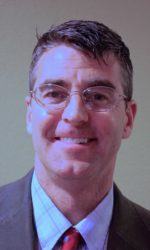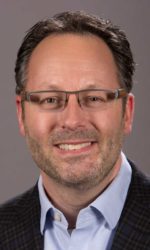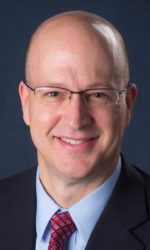Scott C. Dickinson, DMD; Mark Donaldson, BSP, RPH, PHARMD, FASHP, FACHE; Jason H. Goodchild, DMD
Due to COVID concerns and restrictions, this course will be offered as a live webinar. You can choose which day or days you would like to attend.
Course Description
Providing dental care to anxious and fearful patients continues to be a major challenge facing dentists. Despite advances in management techniques and treatment delivery, patients’ preexisting opinions and experiences contribute to dental anxiety and fear. Feelings of apprehension create psychological obstacles that prevent dental patients from seeking and receiving care. Of the current techniques to facilitate coping or to minimize procedure apprehension, in-office adult minimal sedation has garnered the most attention, with either oral medications, inhaled nitrous oxide, or both.
Dental fear is a learned response. Family, friends, and popular media can influence patients’ attitudes toward dentistry; this attitude manifests in a cycle of fear that is characterized by avoidance of care and dental pathology. Dentists have used numerous techniques to improve patient comfort during treatment, employing distraction techniques, calming dialogue, and positive reinforcement to manage anxious patients who otherwise would use the “white-knuckle” technique.
In recent years, the use of oral benzodiazepines such as triazolam and lorazepam (with or without nitrous oxide) for the diminution of perioperative anxiety and fear in dental patients has increased. State dental boards and Provincial Colleges, in response, have changed or developed new regulations outlining the training and equipment needed for in-office adult minimal oral and inhalational sedation. Although regulations for the provision of in-office adult minimal oral and inhalational sedation vary widely with respect to training and pharmacological strategies, consonance exists on the use of inherently safe drugs, the use of pulse oximetry, and the availability of emergency equipment including pharmacologic antagonists.
These dynamic lectures will cover both the science and art of adult minimal sedation in an interactive and engaging multimedia presentation. The pharmacological basis of therapeutics will be addressed, taking the principles of academia into the realm of clinical practice. Treatment strategies and protocols will be discussed in a comprehensive, case-based approach.
Course Objectives
As a result of attending this class, you will be able to:
- Describe the continuum of consciousness.
- List the characteristics of the ideal sedative for in-office use.
- Match the right drug at the right dose to the right patient and the right procedure.
- Discuss the advantages and disadvantages of oral conscious sedation versus other modalities.
- Demonstrate competency in the administration of inhalational sedation with nitrous oxide and oxygen.
- List the characteristics of the ideal sedative for in-office use.
Course Schedule of Topics Each Day
Part 1 — Friday, October 2, 2020
- What is Adult Minimal Sedation All About?
- Pharmacology of Oral Sedatives and their Utilization with Nitrous Oxide
- Keeping Patients Safe: Physiological Monitoring and Equipment
- Minimal Oral Sedation Protocols and Patient Management
- Keeping Patients Safe: Flumazenil & Naloxone
- Minimal Sedation Regulations and Other Regulatory Considerations
Part 2 — Saturday and Sunday, October 3-4, 2020 – roughly, first half will be Saturday, second half will be Sunday – depends on presentation and questions the day of
- Clinically-Useful Pharmacology
- Applied Physiology & Anatomy of Respiration
- Patient Assessment and Risk Management
- Nitrous Oxide Equipment: Plumbed and Portable
- Incremental and Rapid Induction Administration Techniques
- Nitrous Oxide Contamination and Scavenging, When Fail-Safe Isn’t Safe
- Contamination and Scavanging
- Nitrous Oxide and Oxygen Pharmacology
- Keeping Patients Safe: The Dental Emergency Kit
- Beyond Sedation: How Sedation can improve your Local Anesthesia success
- Beyond Sedation: Pain mechanisms and Appropriate Analgesic Prescribing
- Inhalational Sedation Regulations and Other Regulatory Considerations
Instructors
 Scott C. Dickinson received his undergraduate degree from St. Lawrence University and his dental degree from the University of Pennsylvania, School of Dental Medicine. After graduation he completed an AEGD while serving in the U.S. Army. During this time Dr. Dickinson received training on and regularly used nitrous oxide and oxygen, oral, and intravenous sedation techniques. During his service in the Army he performed the duties of both a flight surgeon and a general practicing dentist. After leaving the Military he entered private practice where he served as the Vice President of Clinical Support for Aspen Dental Management. In this role he was responsible for the training, new dentist orientation, and continuing education needs of both the company and the over 700 doctors it associates with. He now maintains an active general dental practice in Pensacola Florida where he regularly uses sedation techniques to more comfortably treat his patients.
Scott C. Dickinson received his undergraduate degree from St. Lawrence University and his dental degree from the University of Pennsylvania, School of Dental Medicine. After graduation he completed an AEGD while serving in the U.S. Army. During this time Dr. Dickinson received training on and regularly used nitrous oxide and oxygen, oral, and intravenous sedation techniques. During his service in the Army he performed the duties of both a flight surgeon and a general practicing dentist. After leaving the Military he entered private practice where he served as the Vice President of Clinical Support for Aspen Dental Management. In this role he was responsible for the training, new dentist orientation, and continuing education needs of both the company and the over 700 doctors it associates with. He now maintains an active general dental practice in Pensacola Florida where he regularly uses sedation techniques to more comfortably treat his patients.
 Mark Donaldson received his baccalaureate degree from the University of British Columbia and his Doctorate in Clinical Pharmacy from the University of Washington. He completed a residency at Vancouver General Hospital, and has practiced as a clinical pharmacy specialist, clinical coordinator and director of pharmacy services at many healthcare organizations in both Canada and the United States. He is currently the Associate Principal of Clinical Pharmacy for Vizient’s Advisory Solutions, and lives in Whitefish, Montana.
Mark Donaldson received his baccalaureate degree from the University of British Columbia and his Doctorate in Clinical Pharmacy from the University of Washington. He completed a residency at Vancouver General Hospital, and has practiced as a clinical pharmacy specialist, clinical coordinator and director of pharmacy services at many healthcare organizations in both Canada and the United States. He is currently the Associate Principal of Clinical Pharmacy for Vizient’s Advisory Solutions, and lives in Whitefish, Montana.
Dr. Donaldson is a Clinical Professor in the Department of Pharmacy at the University of Montana in Missoula, and Clinical Associate Professor in the School of Dentistry at the Oregon Health & Sciences University in Portland, Oregon. He has a special interest in dental pharmacology and has lectured internationally to both dental and medical practitioners. He has spent the last 20 years focusing on dental pharmacology and dental therapeutics, and is a leader in the field.
Dr. Donaldson has published numerous peer-reviewed works and textbook chapters. He currently serves on the Editorial Board for the Journal Healthcare Executive and the Journal of the American Dental Association and is a reviewer for over ten other different journals. He is board certified in healthcare management and is the Past-President and current Regent of the American College of Healthcare Executives’ Montana Chapter. Dr. Donaldson was named as the 2014 recipient of the Bowl of Hygeia for the state of Montana and is the 2016 recipient of the Dr. Thaddeus V. Weclew Award. This award is conferred upon an individual who has made outstanding contributions to the medical, dental and pharmacy literature.
 Jason Goodchild is a graduate of Dickinson College in Carlisle, PA. He received his dental training at the University of Pennsylvania School of Dental Medicine. Dr. Goodchild serves as Associate Professor & Chairman of the Department of Diagnostic Sciences at Creighton University School of Dentistry (Omaha, NE). Recently, he joined the Premier Dental Products Company in Plymouth Meeting, PA as the Director of Clinical Affairs. He has published numerous articles and lectures internationally on the topics of treatment planning, treatment of medical complex patients, restorative dentistry, pharmacology, emergency medicine in dentistry, enteral sedation dentistry, and dental photography. He has been an invited speaker for the Academy of General Dentistry and American Association of Dental Examiners. He is a reviewer for the Journal of the American Dental Association, General Dentistry, and Quintessence International. Dr. Goodchild maintains a private general dental practice in Havertown, PA.
Jason Goodchild is a graduate of Dickinson College in Carlisle, PA. He received his dental training at the University of Pennsylvania School of Dental Medicine. Dr. Goodchild serves as Associate Professor & Chairman of the Department of Diagnostic Sciences at Creighton University School of Dentistry (Omaha, NE). Recently, he joined the Premier Dental Products Company in Plymouth Meeting, PA as the Director of Clinical Affairs. He has published numerous articles and lectures internationally on the topics of treatment planning, treatment of medical complex patients, restorative dentistry, pharmacology, emergency medicine in dentistry, enteral sedation dentistry, and dental photography. He has been an invited speaker for the Academy of General Dentistry and American Association of Dental Examiners. He is a reviewer for the Journal of the American Dental Association, General Dentistry, and Quintessence International. Dr. Goodchild maintains a private general dental practice in Havertown, PA.
Disclosures:
- Drs. Dickinson, Donaldson and Goodchild have no relevant financial relationships to disclose.
- The staff of the University of Washington Office of Continuing Dental Education have no relevant financial relationships to disclose.
Course Logistics
DATE:
Friday, Saturday and/or Sunday, October 2-4, 2020 (attend any day, or combination thereof)
LOCATION:
Online webinar via Zoom
TARGET AUDIENCE:
This course is applicable for all dental professionals interested in providing minimal sedation in their office.
TIMES:
Course: 8:30am – 4:30pm PDT Friday, Saturday and/or Sunday
TUITION – price includes lunch:
$399/Dentist per day
$249/Staff per day
$359/Current Dental Alumni Member per day
* This course is eligible for a 10% tuition discount if you are a current member of the UW Dental Alumni Association.
CREDITS:
7 hours per day
The University of Washington is an ADA CERP Recognized Provider.
ADA CERP is a service of the American Dental Association to assist dental professionals in identifying quality providers of continuing dental education. ADA CERP does not approve or endorse individual courses or instructors, nor does it imply acceptance of credit hours by boards of dentistry.

The University of Washington is a member of the Association for Continuing Dental Education.
University of Washington designates this activity for 7 continuing education credits per day.